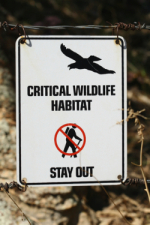Environmental impact assessment (before-after)
 © Bambi L. Dingman | Dreamstime.comWhere?Tasmania, Victoria, NSW
© Bambi L. Dingman | Dreamstime.comWhere?Tasmania, Victoria, NSW
Who for? Multiple, including mine operators, hydro projects, logging operators, transport infrastructure developers.
What we did:
Many large-scale developments (like mines, dams, road infrastructure etc.) must measure and report on ecological impacts after construction. These may require tracking of key ‘indicator species’ or system impacts like changes in the structure of vegetation communities. The tricky thing about environmental impacts is that they come in many shapes and sizes. They may be short-lived, or cause gradual declines over time.
Without careful planning and analysis, there is a chance of incorrectly interpreting changes as impacts (which can incur unnecessary compliance costs). There is also a very real chance of missing a real impact until it has progressed significantly (which can have huge environmental and business cost).
For these assessments, we designed surveys and metrics that would accurately capture the potential impact.  © Symbolix
© Symbolix
The data analysis was done through a hierarchy, which considered global down to more targeted changes (e.g. specific species). This stepwise analysis method results in a streamlined impact monitoring and a clear communication of the findings to assist decision makers to better assess the likelihood and consequence of an ecological impact.
Although the statistical tests and questions change, we recommend a hierarchical approach to identify trends and to assess change in social and business data also. That is, we would define global indicators (e.g. net income, manufacturing output, business resilience); we can then assess the value and trend in these indicators and finally use exploratory methods to query the data to assess what might be driving the change.
